Chinese and Korean Art
1/8
There's no tags or description
Looks like no tags are added yet.
Name | Mastery | Learn | Test | Matching | Spaced |
|---|
No study sessions yet.
9 Terms
- largest and most complete Chinese architectural ensemble in existence
- 9000 rooms
- walls 30 feet high to keep people out and those inside in
- named b/c only royal court could enter
- each corner of rectangular plan w/ tower representing four corners of the world
- focus: Hall of Supreme Harmony, throne room and seat of power; wood structure made w/ elaborately painted beams; meant for grand ceremonies
- yellow tile roofs and red painted wooden beams placed on marble foundations unify structures in artistic whole
- Hall of Supreme Harmony ceremonies: new year, winter solstice, emperor's birthday
- surrounding wall characteristic of Chinese city: privacy w/in provides protection; containment part of Chinese culture
Forbidden City
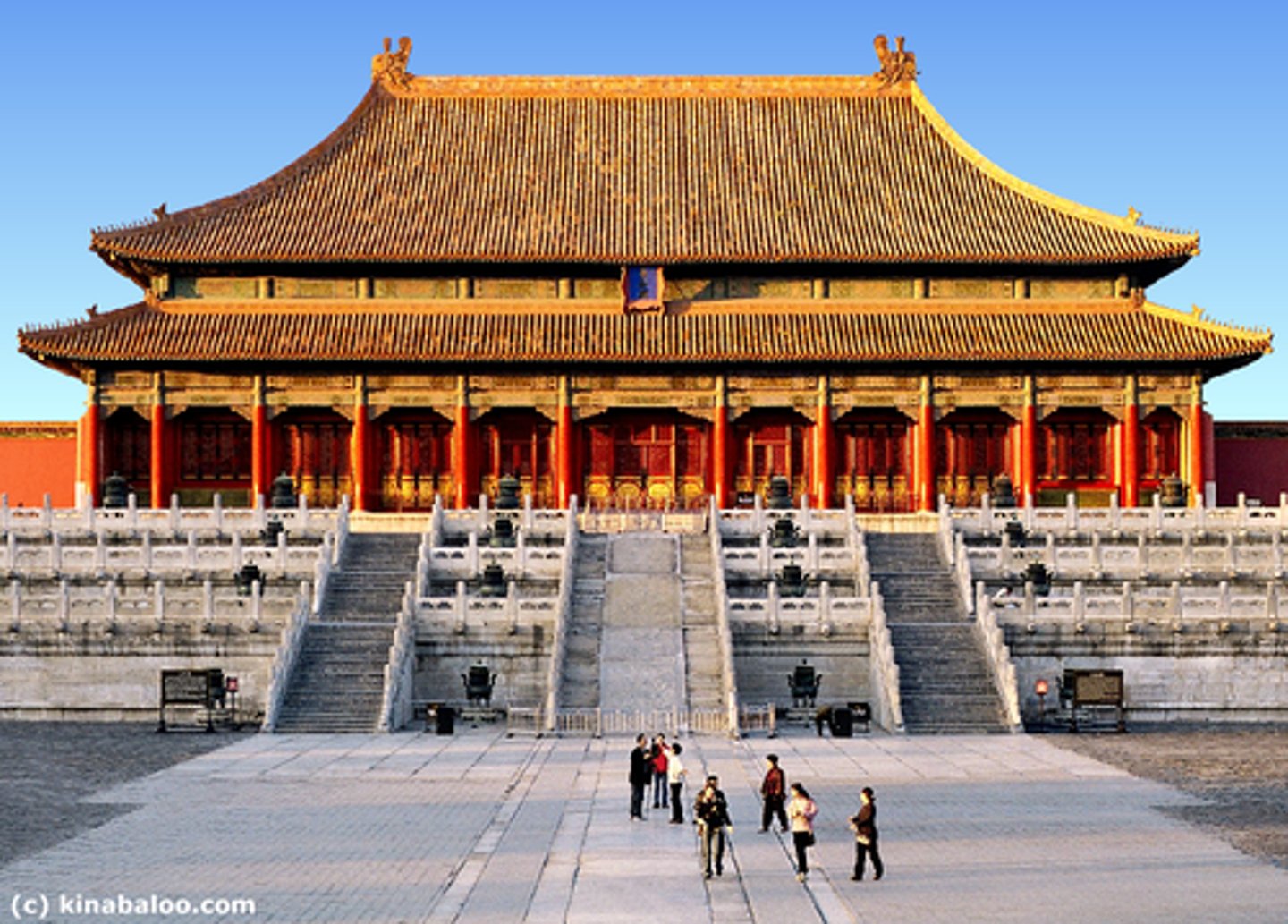
- died 168 BCE in Hunan province; Han Dynasty
- tomb found w/ over 100 objects in 1972
- T-shaped silk banner covering inner coffin of intact body
- probably carried in procession to tom then placed over body to speed journey to afterlife
- yin symbols at left; yang symbols at right; center mixes the two philosophies
- painted in three distinct regions
- top: heaven w/ crescent moon at left, legend of ten suns at right; center: two seated officers guard centrance to heavenly world
- middle: earth w/ Lady Dai in center on white platform about to take journey to heaven w/ walking stick that was found in her tomb; mourners and assistants appear by side; dragons' bodies symbolically circled through bi in yin and yang exchange
- bottom: underworld; symbolic low creatures frame underworld scene: fish, turtles, dragon tails; tomb guardians protect the body
Funeral Banner of Lady Dai (Xin Zhui)
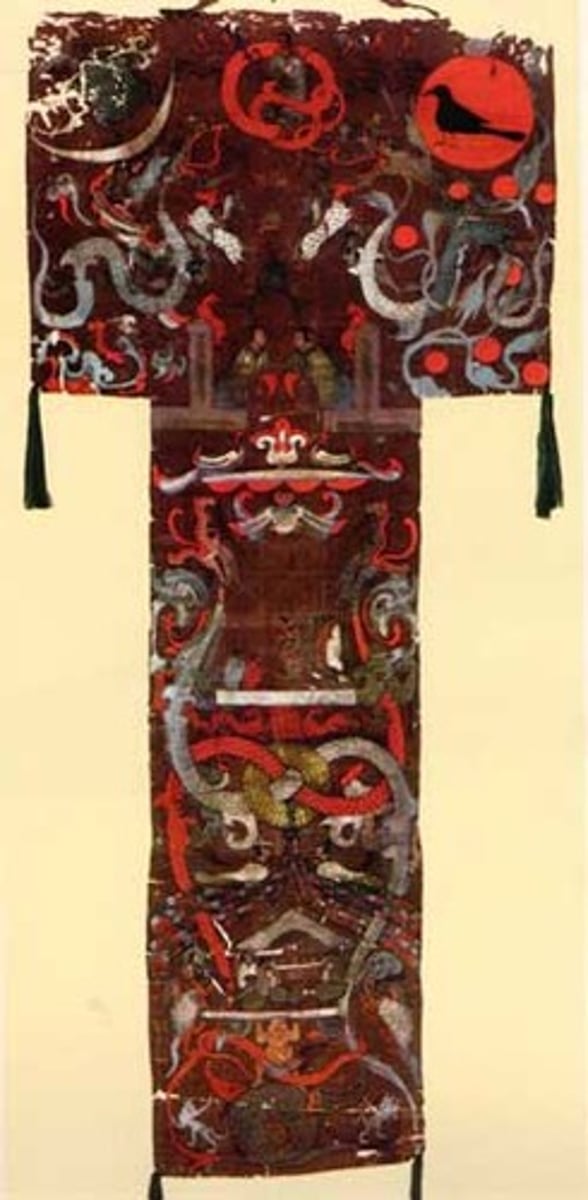
- artist isolated self away from civilization to be w/ nature and study it, for landscapes; Daoist philosophy
- produced very complex landscapes
- different brushstrokes describe different kinds of trees; coniferous, deciduous, etc.
- long waterfall on right balanced by mountain on left; waterfall accents height of mountain
- mot pure landscape: donkeys laden w/ firewood driven by two men; small temple in forest; man seen as small and insignificant in vast natural world
- mists created by ink washes; silhouette roofs of temple
- might be only surviving work; signature hidden in bushes on lower right
Travelers among Mountains and Streams
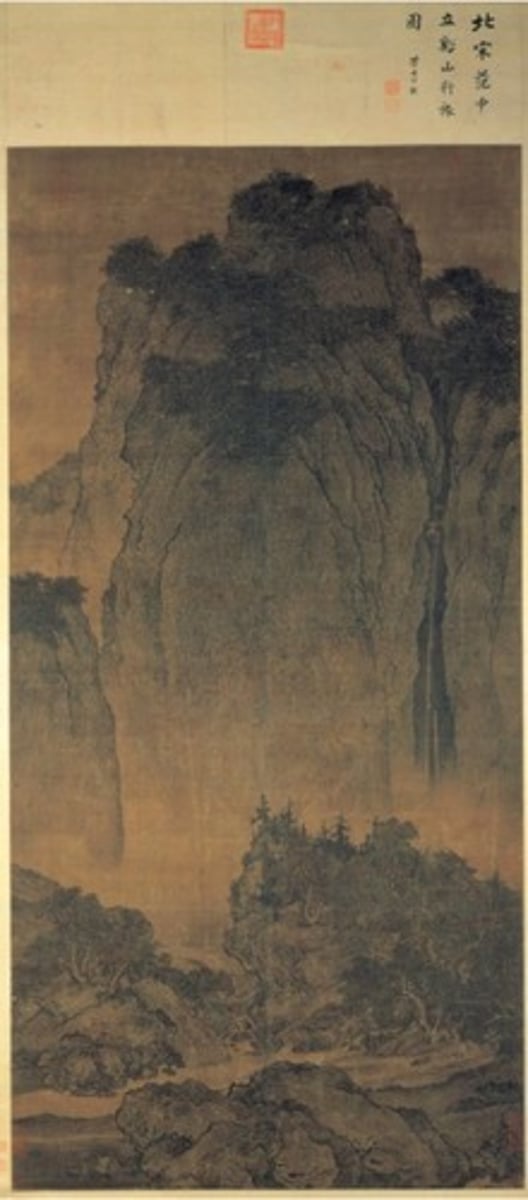
- Korean prime minister and soldier
- made when he was a second grade civil officer; insignia designed w/ clouds and wild goose
- Korean portraits emphasize how the subject made a great contribution to country and how spirit of loyalty to king and country valued by Confucian philosophy
- repainted over the years, especially in 1475
- great scholar
Portrait of Sin Sukju (1417-1475)
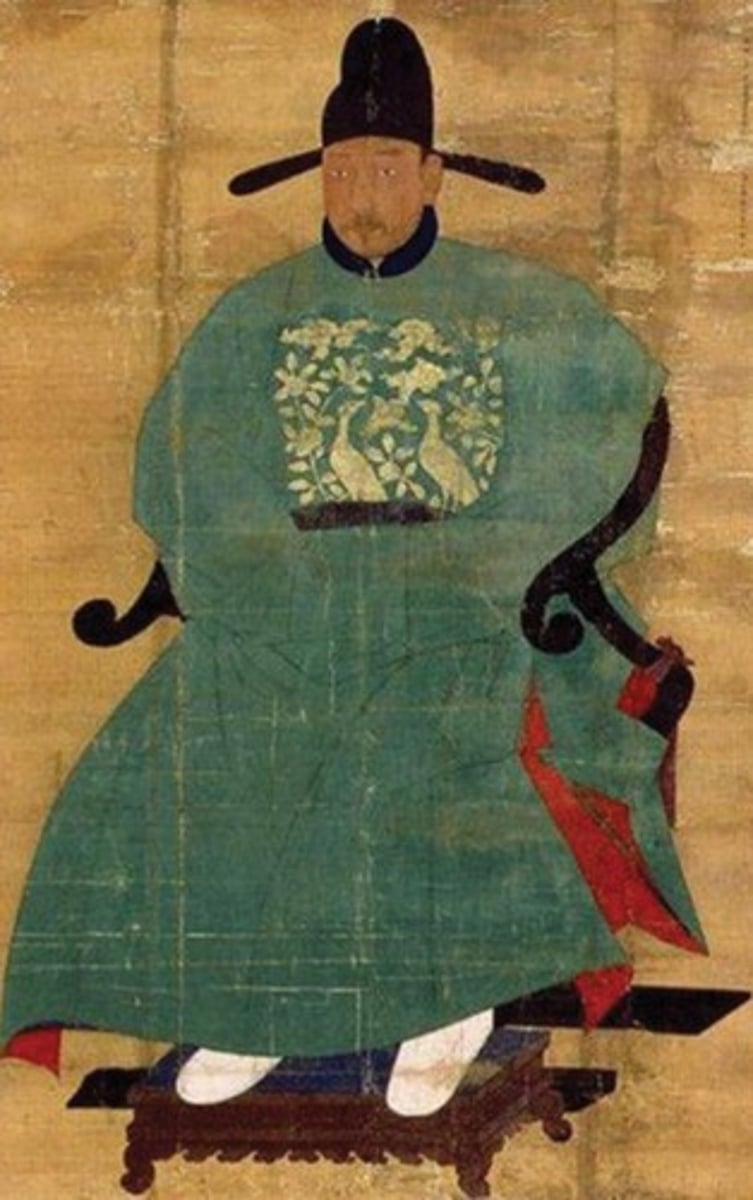
- painted during CUltural Revolution of 1966-1976; high art dismissed as feudal or bourgeois
- poster-like; vivid colors, dramatic and obvious political message
- dominated by pictorial representation
- done anonymously; individual artistic fame seen as counter-cultural in collectivist society
- moment in 1920s; Mao on way to Anyuan to lead miners' strike
- Mao worked for reforms for miners; supported a local strike for better wages, working conditions, education
- for many people: this action formed permanent bond w/ Communist party
- iconic representation of Great Leader's career
- may be most reproduced image ever made: 900,000,000 copies generated
Chairman Mao En Route to Anyuan
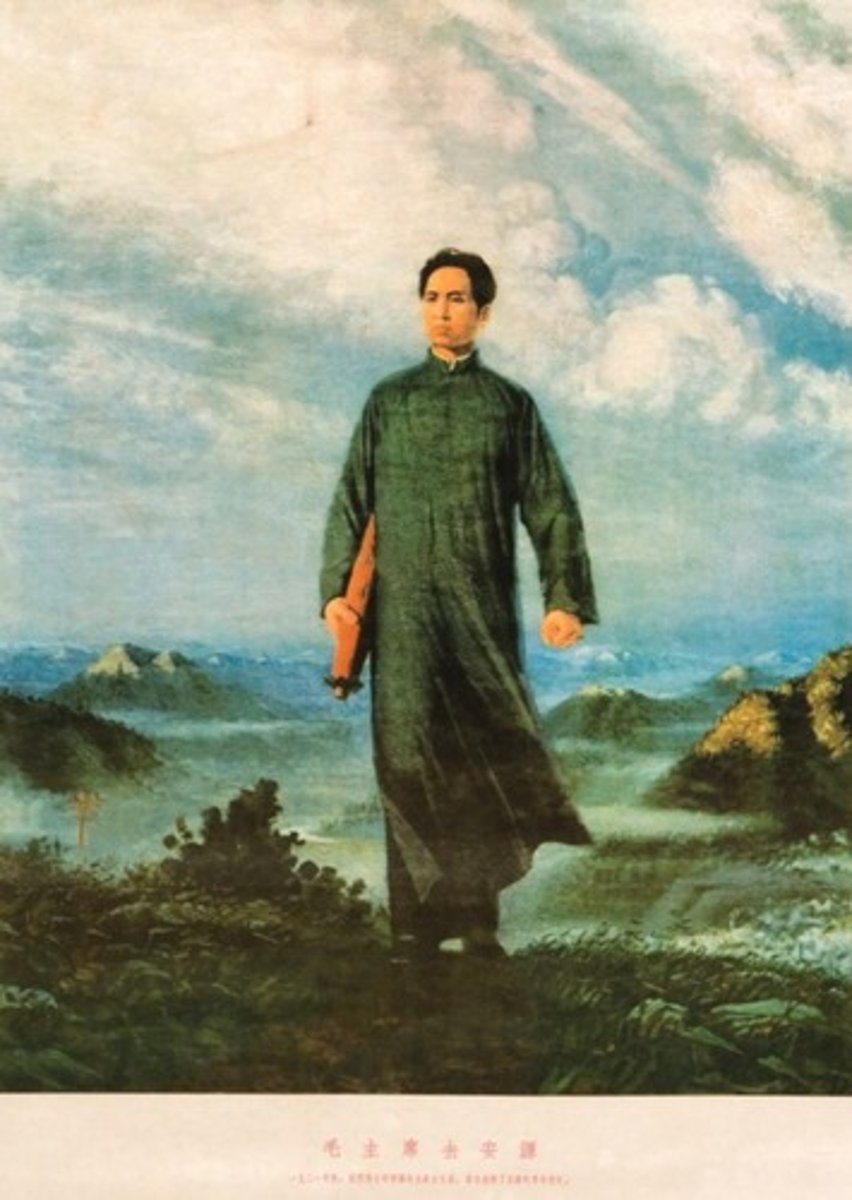
- about 8000 terracotta warriors, 100 wooden chariots, 2 bronze chariots, 30,000 weapons buried as par of tomb of Emperor Shi Huangdi
- soldiers 6 feet tall, some fierce, some proud, som confident; taller than average person of the time
- representation of a CHinese army marching into next world
- Daoism in individualization of each solider despite their numbers
- originally colorfully painted
- discovered in 1974
- warriors mass produced, then personalized
Terra cotta warriors from mausoleum of the first Qin emperor of China
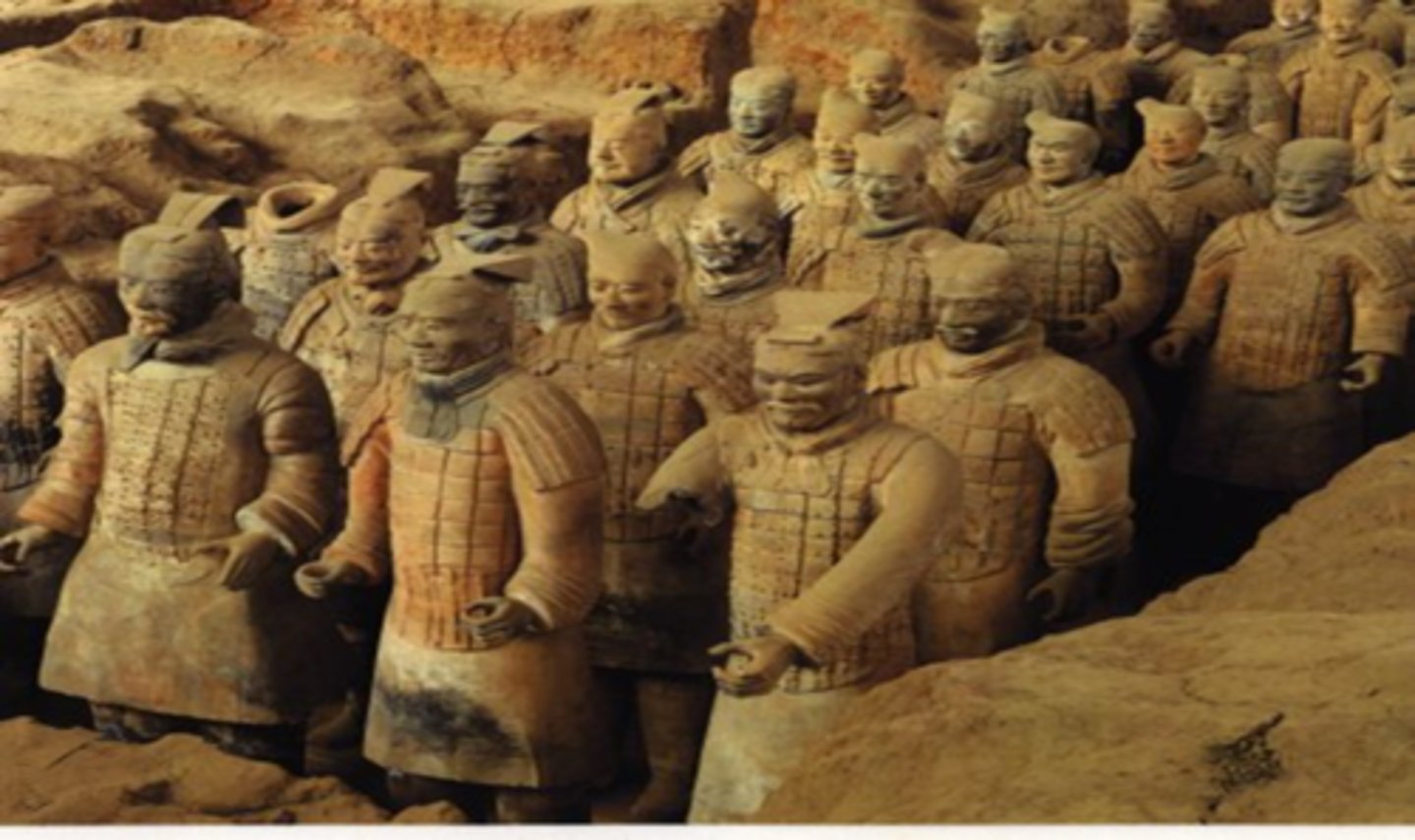
- caves along banks of Yi River
- sculptures and reliefs carved from existing rock; some colossal, some small
- documents attests that 800,000 people worked on the site; 110,000 Buddhist stone statues, more than 60 stupas, 2800 inscriptions on steles
- Buddha arranged as if on altar of a temple, deeply set into rock face
- inscription states that Empress Wu Zetian was principal patroness of site and used private funds to finance
- Vairocana Buddha having monk attendants, bodhisattvas, and guardians flanking
- elongated legs and exaggerated poses
Longmen Caves
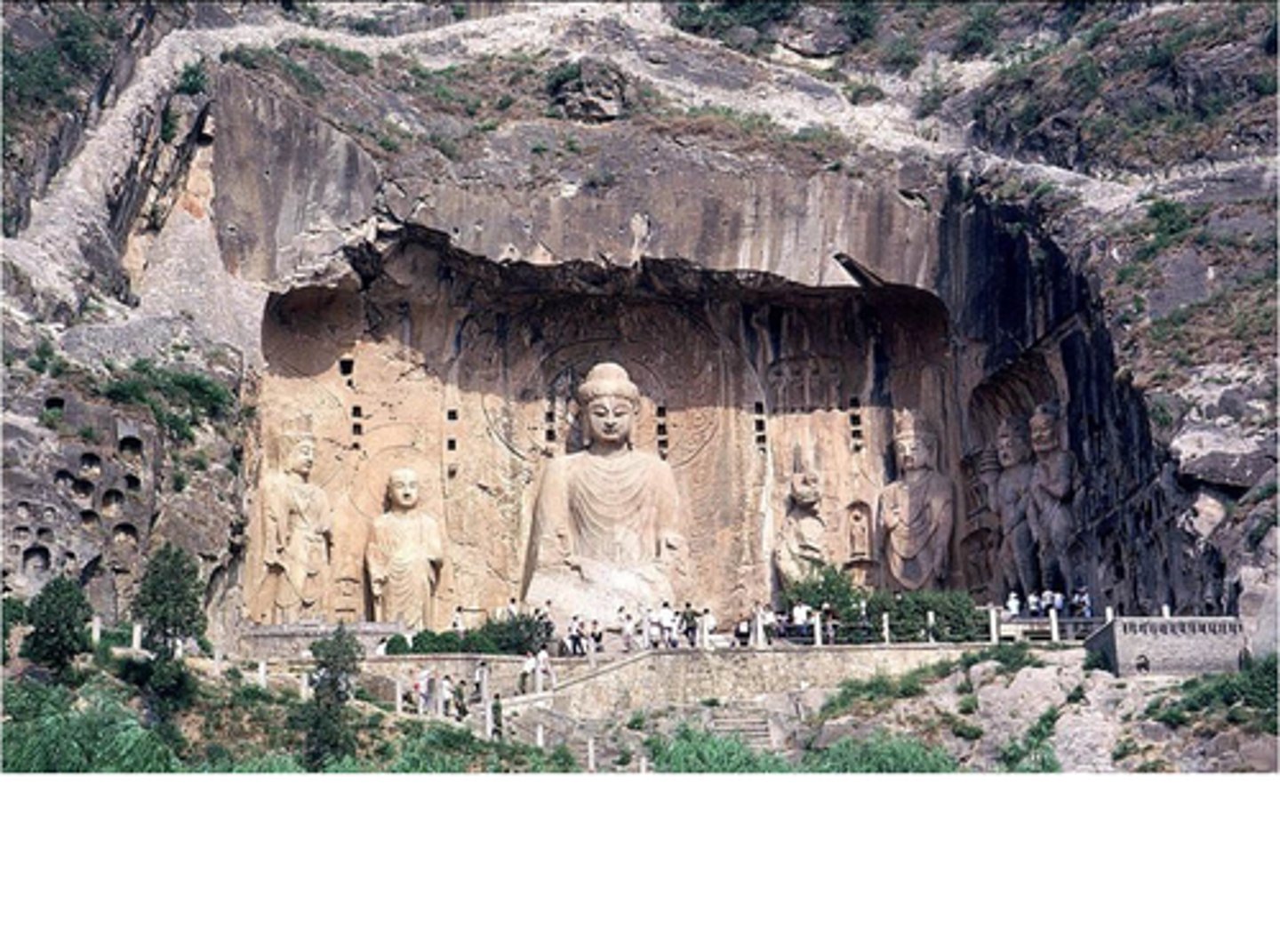
- uncovered in Gyeongju, Korean from a royal tomb
- symbolizes geometric trees
- antler forms influenced by Shamanistic practices in SIberia
- very light weight; gold extremely thin and fragile; had limited use; maybe for ceremonial occasions, perhaps only for burial
Gold and jade crown
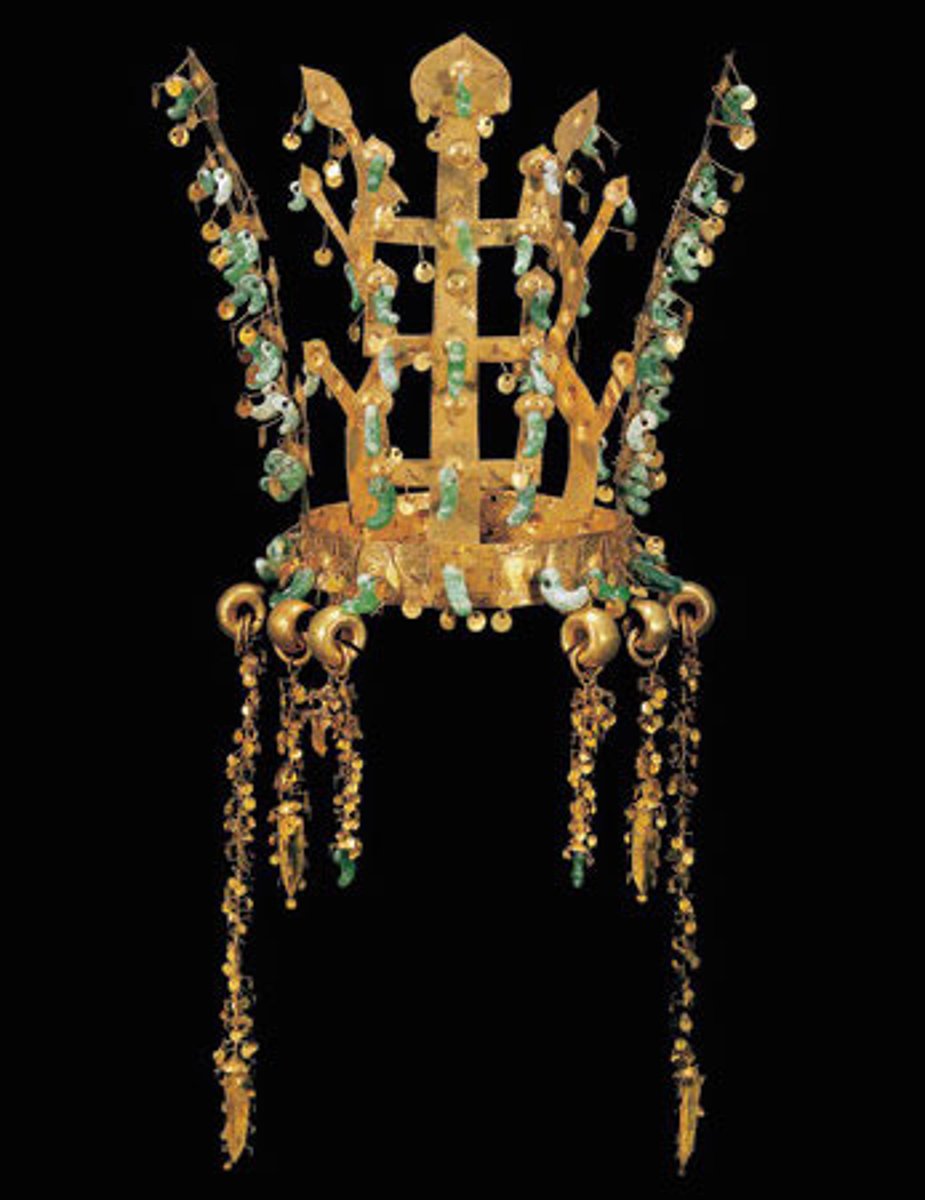
- one of most important examples of blue and white porcelain in existence
- made for altar of Daoist temple, along w/ incense burner, which as not been found; typical altar set
- dedication on side of neck of vessels; believed to be earliest known blue and white porcelain dedication
- inscription on one of vaese: "Zhang Venjin, from Jingtang community, Dejiao village, Shuncheng township, Yushan county, Xinzhou circuit, a disciple of the Holy Gods, is pleased to offer a set comprising one incense burner and a pair of color waves to General Hu Jingyi at the Original Palace in Xingyuan, as a prayer for the protection and blessing of the whole family and for the peace of his sons and daughters. Carefully offered on an auspicious day in the Fourth Month, ELeventh year of the Zhizheng reign."
- blue color imported from Iran; Chinese expansion into western Asia makes cobalt blue available
- vases modeled after bronzes
- elephant-head-shaped handles
- neck and foot of vases: leave and flowers
- central section: CHinese dragons w/ traditional long bodies and beards; dragons have scales and claws set in a sea of clouds
- named after Sir Percival David, collector of Chinese art
The David Vases
